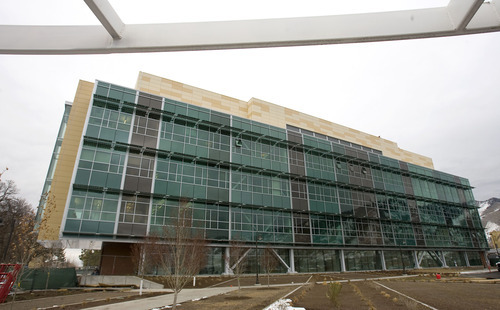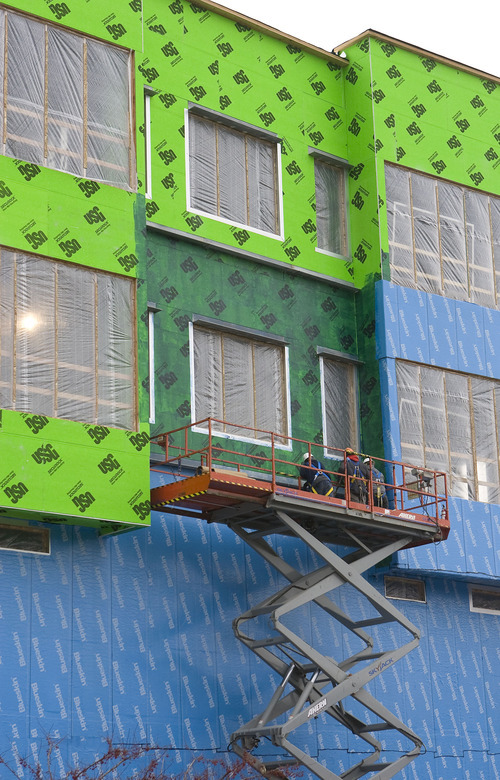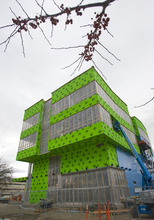This is an archived article that was published on sltrib.com in 2011, and information in the article may be outdated. It is provided only for personal research purposes and may not be reprinted.
Nowhere else in the nation did construction employment contract as sharply over the past year as it did in the Logan metropolitan area, according to an Associated Contractors of America report released Wednesday.
Employment in that sector fell by 25 percent in the year ending Nov. 30, according to the trade association, which said it developed the figure by analyzing data collected by the U.S. Department of Commerce's Bureau of Labor Statistics.
AGS said the Logan area lost 800 jobs during the 12-month period. Although the number was relatively small when compared to other U.S. metros with bigger populations, it represented one of every four paid construction positions in the largely rural area of northern Utah.
Several people connected to the construction industry in Cache County downplayed the decline, although other data point to some retraction. Some attributed it to the completion of several big construction projects: the new College of Agriculture building on the campus of Utah State University, the Utah Department of Transportation's 10th West Bypass undertaking, and the Ruby pipeline that will move natural gas from Wyoming to Oregon.
"It's not that Logan or Cache Valley is doing anything wrong or there's some kind of peculiar event going on, other than two or three significant projects have been completed," said Richard Thorn, CEO of the Associated General Contractors of Utah.
The decline was "a timing issue with three significant employee-staffed projects that have finished," Thorne said. "I don't see an economic event, or lack thereof."
In fact, Cache County has been relatively unscathed by the recession and sluggish recovery. In November, the county's unemployment rate was 4.7 percent, the lowest level since early 2009. Unemployment peaked last year at 5.9 percent.
Dell Loy Hansen, CEO of Wasatch Property Management, a Logan-based development and construction company, said the AGC estimates are real. But they don't take into account big construction projects that firms such as his are building in the Logan area largely with their own in-house crews, meaning they don't rely heavily on outside workers who might be laid off when projects are completed.
"Municipal and public works [projects] have slowed to a trickle. But we think the private market for us has never been bigger. We've never had as much in the private market [given that] interest rates are low," Hansen said.
Hansen's company recently finished The Falls at Riverwood, a 214-unit apartment complex in Logan, using its own crews whose numbers didn't show up in the AGC data. In August, Wasatch Property Management broke ground on a 250-unit apartment project that will account for 9 percent of the housing in North Logan when it's finished.
"The real answer is, it's different," Hansen said. "It's not that construction has stopped. It's just focused on different sectors."
There is evidence of hurt, however. Building permits in areas of Cache County outside Logan's city limits have fallen from 460 in 2007 to 271 this year. Logan City officials didn't respond to requests for comparable data.
Larry Jardine, president of LeGrand Johnson Construction in Logan, said his company's residential business declined rapidly after the recession began four years ago. In his 53 years in construction, Jardine has never seen business conditions so difficult. Prospects for 2012 are looking up, but not by much, he said.
"The outlook at the end of 2011 was, you might have to look at it with a microscope, but it was better than the beginning of 2011."
He is doubtful about the likelihood of much federally funded highway construction work being available next year given that the government plans to cut investments in construction and infrastructure by 6.2 percent this year.
"The pipeline of stimulus [money] is a little more empty," Jardine said.
The federal government's construction budget for the 2012 fiscal year will be 18 percent lower than in 2010, according to the AGC.
Twitter: @sltribpaul —
Construction jobs in U.S.
Construction employment fell in 146 of 337 metro areas from November 2010 to last month.
The top 10 declines, by percentage:
Logan, 25 percent
Wilmington, N.C., 21 percent
Montgomery, Ala., 21 percent
Bridgeport-Stamford-Norwalk, Conn., 17 percent
Albuquerque, N.M., 14 percent
Chico, Calif., 12 percent
Redding, Calif., 11 percent
Palm Coast, Fla., 11 percent
Merced, Calif., 11 percent
Flint, Mich., 11 percent
Other Utah metros:
Ogden-Clearfield, up 3 percent
Provo-Orem, up 3 percent
Salt Lake City, down 2 percent
St. George, unchanged
Source: Associated General Contractors of America







